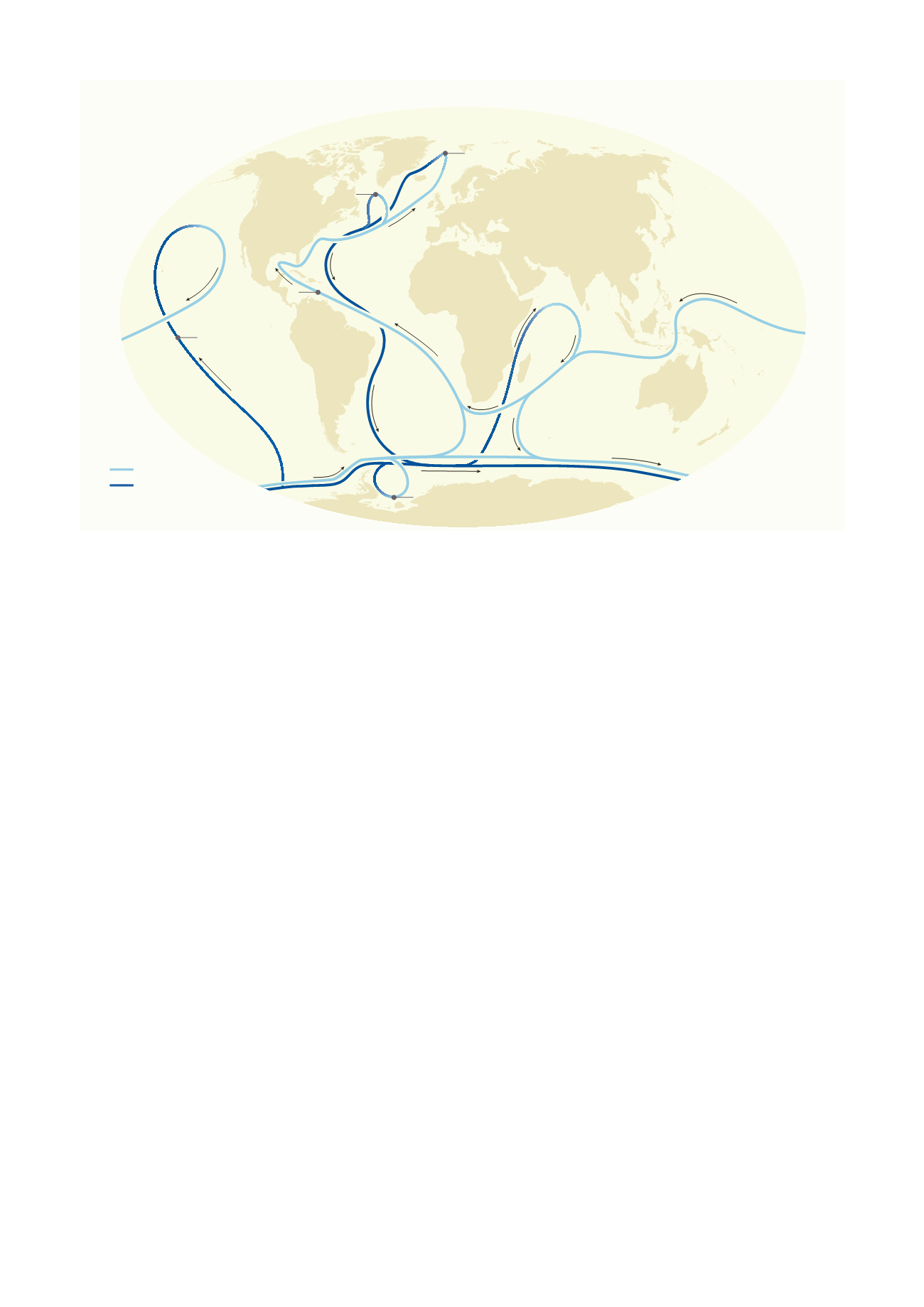

38
Marine Litter
Vital Graphics
GEOGRAPHICAL DISTRIBUTION
The water approaching the centre of the gyre eventually
has to exit and it does so by flowing downward, sinking
to depths of a few hundred metres. Plastic brought to the
centre of the gyre by the constantly spiralling water does
not travel downward with the escaping water because
it is too buoyant. Instead, it stays behind, trapped in the
converging current (van Sebille, 2015). Over time this
gathering process has led to the formation of five great
litter accumulation regions associated with each of the
gyres (Law et al., 2010, 2014; Cózar et al., 2014; Eriksen et al.,
2014; van Sebille et al., 2015). In these areas of converging
surface circulation, plastic debris occurs in much higher
concentration than in other areas of the ocean – up to 10
kg per square km (Cózar et al., 2015; van Sebille et al., 2015).
Recently, marine litter has also been observed in the
Arctic region (Bergmann et al., 2015) where an additional
region with high plastic concentration could be under
formation (van Sebille et al., 2012). The concentration of
marine litter in the Arctic could increase if floating plastic
is transported into the polar regions from the North
Atlantic, facilitated by melting sea ice (Bergmann et al.,
2015). The Southern Ocean, which is generally considered
to be one of the most pristine regions on the planet, is
also a site of marine litter. Beach surveys on Antarctic
islands reveal that marine debris, mostly consisting of
plastic, is accumulating at rates up to four times higher
than previously estimated (Eriksson et al., 2013).
In addition, enclosed or coastal seas, with densely
populated coastal zones and limited exchange with the
open ocean, can be zones of accumulation of plastic debris.
Modelling efforts have identified the Mediterranean,
South East Asian seas and Bay of Bengal as coastal zones
with increased concentration of debris and microplastics
(Cózar et al., 2015; UNEP, 2016a).
Models examining the movement of plastic from land-
based sources across different regions also point to
connections between oceanic basins and gyres, with
particles moving from one gyre to another and across
oceanic basins in a matter of years. For example,
particles released in West Africa could reach the western
coast of South America and the Caribbean within one
to three years and the North Atlantic Gyre in four to five
years (UNEP, 2016a). Of course, the major patterns of
global surface circulation are subject to high temporal
and spatial variability and surface waters are eventually
mixed due to wave and wind action. This leads to short-
term changes in plastic concentrations across the
horizontal and vertical dimensions of the ocean (Reisser
et al., 2015).
Deep transfer and accumulation
Plastic debris does not remain on the surface forever.
Eventually it starts to sink. Cold, dense water sinks in the
North Atlantic and Southern Ocean, driving what is often
referred to as the ocean conveyor belt or thermohaline
circulation. This deep water circulation pattern couples
with the subtropical gyres and redistributes cooled
waters towards the deep ocean layers. The combination
of these currents could provide a mechanism for
Surface water Deep water Deep water formation Surface current Deep current Deep water formation Deep water formation Paci c Ocean Paci c Ocean Atlantic Ocean Indian Ocean Thermohaline circulation Source : NASA Adapted from a map by Laura Margueritte Surface water Deep water Deep water formation Surface current Deep current Deep water formation Deep water formation Paci c Ocean Paci c Ocean Atlantic Ocean Indian Ocean Ther ohaline circulation Source : NASA Adapted from a map by Laura Margueritte

















